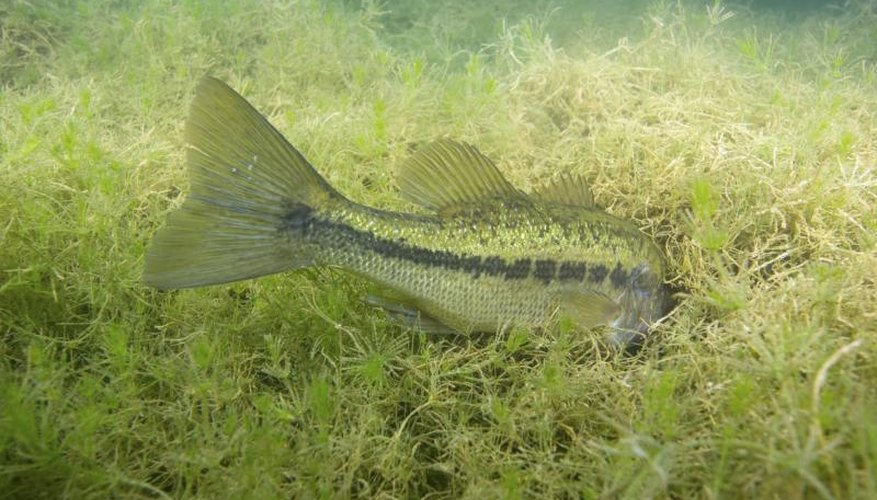
Fishing effectively requires that you put your lure where the fish are; unfortunately, many popular game fish love to hang out in dense cover. Working your lure through these locations can be as frustrating as it is productive, as the razor-sharp hooks on your lure snag onto hidden obstructions. While you can purchase lures and hooks designed to prevent snags, you can rig ordinary hooks in ways that prevent them from becoming stuck.
Weedless Lures and Hooks
Many lures that anglers use to fish in dense cover, such as bass jigs, feature stiff plastic bristles near the hook that keep the sharp tip of the hook from snagging underwater obstacles. Other lures and hooks come equipped with a small wire gate that attaches to the hook. While a fish’s mouth can penetrate the gate, allowing you to attain a solid hook set, the gate prevents the hook from snagging branches, weeds and rocks.
Rigging Normal Hooks and Baits
You do not need to purchase specially designed hooks or lures to avoid snagging the bottom of a river or lake. Instead, rig soft plastic baits "Texas style" by inserting a hook into the nose of a worm, grub or lizard. Push and turn the hook so that the point emerges from the bottom side of the bait. Turn the hook 180 degrees so that the tip of the hook points back at the bait; and push the hook into the body of the bait so that it barely emerges from the top side of the bait. With only a small bit of the hook emerging from the top side of the bait, it is unlikely to snag on anything, yet a quick hook set easily forces the hook through the remaining plastic and into the fish’s mouth.



